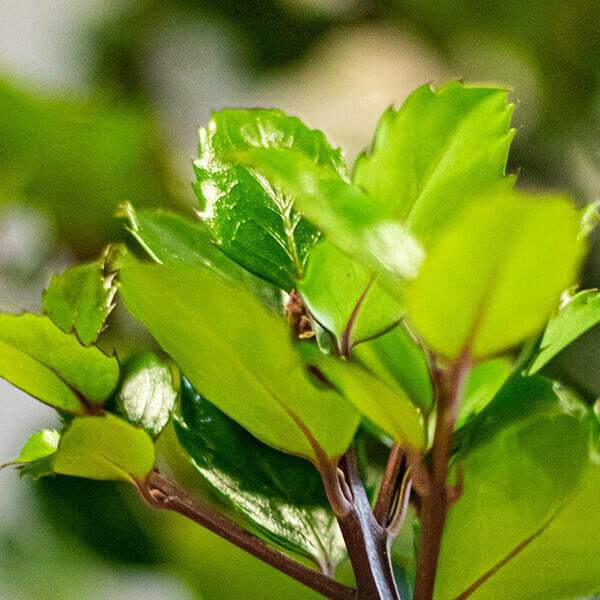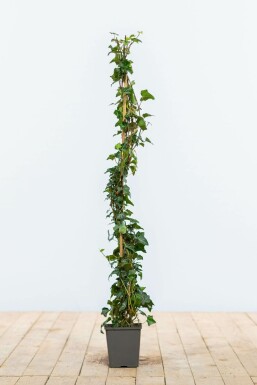Best Hedging Plants For Outdoor Spaces
Best Hedging Plants For Outdoor Spaces
Blog Article
Best Hedging Plants For Stylish Gardens
Improve your garden's appeal with lush hedge ranges such as Yew (Taxus), Thuja, Laurel, Photinia, and Bamboo, commemorated for their structural stability and environmental advantages.
Yew and Thuja provide evergreen protection and winter season durability, while Laurel uses rapid growth and broad, aromatic leaves.
Photinia adds seasonal appeal with its lively red foliage, and Bamboo lends a low-maintenance, tranquil ambiance.
These hedges enhance air quality, lower noise, and produce tranquil, personal spaces.
Appropriate planting, spacing, and upkeep guarantee energetic growth and ecological harmony.
Check out how these lavish ranges can raise your garden's charm and wellness.
Secret Takeaways
Change Your Garden With Lush Hedge Ranges
- Select Yew for its dense, evergreen growth and unrivaled durability.
- Choose Laurel for its fast development and broad leaves, making sure quick privacy.
- Choose Photinia for its dynamic seasonal foliage, which turns a striking dark red.
- Utilize Bamboo for a low-maintenance, winter-hardy hedge with aesthetic appeal.
- Space plants 2-3 per meter and prune routinely for optimum development and health.
Popular Hedge Plants
When changing a garden with lavish hedge ranges, it's vital to consider popular hedge plants such as Yew, Thuja, Laurel, and Photinia due to their unique characteristics and benefits.
Yew (Taxus) is highly esteemed for its longevity and dense, green growth, making it a prime choice for enduring landscapes.
Thuja is noted for its evergreen foliage and robust winter resilience.
Photinia adds seasonal vibrancy with red leaves that darken over time, developing vibrant visual appeal.
Laurel uses fast development and fragrant, broad leaves, ideal for quick personal privacy.
In Addition, Bamboo is an excellent choice for atmosphere, providing a low-maintenance, winter-hardy choice that enhances the garden's aesthetic with its classy, swaying walking canes.
These choices accommodate a variety of horticultural requirements and choices.
Benefits of Garden Hedges
Garden hedges offer a multitude of advantages, making them an important addition to any landscape. These natural barriers are affordable to implement and supply considerable wind security, enhancing air blood circulation and adding to noise decrease. The dense foliage of hedges like Thuja and Beech makes sure personal privacy by obstructing exposure, creating a peaceful and secluded environment.
Hedges likewise play a vital role in microclimate regulation, supplying a stable environment that cultivates plant development and minimizes temperature level changes. Their detailed leaf structures filter contaminants, improving air quality and adding to a much healthier garden community.
Additionally, hedges master sound decrease, absorbing and deflecting sound waves to lower ambient noise levels. This double functionality of providing both acoustic and visual personal privacy boosts the general harmony and aesthetic appeal of any garden.
Planting and Upkeep Tips
For an effective hedge, precise preparation of the planting location is crucial. Make sure the soil has proper pH and drain to support strong root advancement.
Space the plants appropriately for the selected types. Water the hedge frequently during its preliminary development phase, adjusting as needed with seasonal modifications.
Implement a systematic bug control and illness prevention technique, utilizing organic or chemical treatments when essential. Regularly inspect for aphids, mites, and fungal infections.
Apply mulch to keep wetness and reduce weeds. Seasonal pruning promotes thick development and air circulation, important for plant health.
Following these guidelines will assist you cultivate a lively, well-kept hedge that improves the charm of your garden.
Spacing and Cutting Standards
Spacing and Cutting Standards
Correct spacing and trimming are important for cultivating healthy, aesthetically appealing hedges. Sufficient spacing makes sure each plant gets enough nutrients, light, and air flow.
Follow these standards for ideal hedge upkeep:
- Spacing: Position hedge plants 2-3 plants per meter to motivate robust growth.
- Pruning Methods: Routine pruning is vital for maintaining wanted hedge height and shape. Trim new growth in summertime and cut back older wood during winter season.
- Seasonal Care: Change trimming methods and schedules according to seasonal requirements to make sure plant health.
- Hedge Height: Frequently display and cut to preserve the desired hedge height and attain consistent looks.
Sticking to these steps will guarantee your hedge grows, boosting both the appeal and functionality of your garden.
Choosing the Right Hedge
Picking the Right Hedge
Choosing the appropriate hedge includes assessing factors such as fully grown height, foliage density, and ecological resilience. Effective hedge plant choice requires comprehending each species' growth attributes and site-specific adaptability.
For instance, Yew (Taxus) provides excellent durability and dense development, while Thuja is noteworthy for its winter durability. Additionally, thinking about maintenance requirements is important; fast-growing species like Laurel or Privet need regular trimming, whereas low-maintenance alternatives like Bamboo or Ivy might be preferable for those looking for very little upkeep.
Ecological elements such as soil type, light accessibility, and moisture conditions must likewise direct the choice process. This cautious approach guarantees the picked hedges will flourish, supplying both aesthetic and functional advantages to the garden landscape.
Shipment and Planting Recommendations
To guarantee your hedge plants thrive, they must be provided by specialized couriers and planted quickly upon arrival.
Follow these necessary steps for successful planting:
- Soil Preparation: Enrich the soil with organic matter to enhance drain and nutrient material.
- Planting Depth: Create a trench twice the width and equal to the depth of the root ball.
- Watering Strategies: Water completely after planting, keeping the soil regularly moist however not filled.
- Mulching: Use a layer of mulch to retain moisture and suppress weeds.
Client Assistance and Service
Offered the vital role of timely assistance in horticultural pursuits, our customer support team is offered six days a week through telephone, e-mail, and social networks to use skilled suggestions and swiftly address any concerns. Their dedication to quick response times ensures customer satisfaction by resolving queries related to plant health, optimal planting methods, and upkeep schedules.

Communication Technique
Within 24 hr
This comprehensive support system, strengthened by an excellent 9.3/ 10 consumer ranking, highlights our commitment to enhancing the gardening experience for every client.
Frequently Asked Questions
How Long Does It Take for Hedge Plants to Establish?
Hedge plants typically need one to 3 years to end up being completely developed, with the precise period differing by species and growing conditions.
Efficient care during this crucial period is important for robust growth. Consistent watering, vigilant weed control, and suitable fertilizer application are critical in promoting strong root development.
For example, fast-growing species like Laurel may develop faster, while slower-growing ranges such as Yew might take longer. Diligent maintenance speeds up the facility process, resulting in dense and healthy hedges.
What Are the Finest Hedge Plants for Privacy?
The question of the very best hedge plants for personal privacy involves assessing evergreen and deciduous choices.
Evergreen hedges like Thuja, Laurel, and Cypress provide year-round protection, making sure continuous privacy.
On the other hand, deciduous hedges such as Beech provide seasonal privacy, shedding leaves in cooler months.
Secret maintenance pointers for personal privacy hedges include routine trimming, fertilizing in spring, and proper spacing-- normally 2 to 3 plants per meter.
Furthermore, consistent watering and persistent weed removal are vital for promoting healthy, dense growth.
Can Hedge Plants Bring In Wildlife to My Garden?
Yes, hedge plants can draw in wildlife to your garden by supplying vital benefits like shelter, food, and nesting websites, thereby boosting local biodiversity. For example, yew, holly, and laurel are outstanding for bring in birds, while ivy supports a variety of pests.
However, it is very important to note that there are some downsides, such as increased upkeep to manage pests and routine maintenance. Carefully selecting and maintaining hedge ranges can assist balance these advantages and disadvantages, eventually promoting a dynamic and sustainable community in your garden.
Exist Any Flowering Hedge Plants Available?
Yes, there are flowering hedge plants available that can boost the charm of your garden.
For instance, Elaeagnus, likewise called Olive Willow, produces fragrant white flowers in the fall, including a touch of beauty.
Photinia, another popular choice, showcases lively red leaves that mature into an abundant green, creating a vibrant visual effect throughout the seasons.
To ensure these plants grow, it's important to practice proper pruning methods and seasonal upkeep, such as trimming brand-new development in the summertime and cutting down in the winter.
These steps will help keep the health and aesthetic appeal of your blooming hedges.
How Do I Avoid Pests in My Hedge Plants?
To avoid bugs in hedge plants, utilize natural bug control techniques and keep correct hedge care. Introduce useful bugs like ladybugs, which victimize harmful insects, to produce a well balanced environment.
Routinely examine your hedges for indications of infestation and quickly eliminate any afflicted parts to avoid the spread. Make sure the health of your hedges by using well balanced fertilizers and providing adequate water.
Utilize mulching to keep soil moisture and appropriate spacing to minimize plant stress and promote robust growth. These practices collectively help in decreasing pest problems and preserving a healthy hedge.
Conclusion
In essence, selecting the best hedge varieties such as Yew, Thuja, and Laurel can transform any garden into a tranquil sanctuary. These plants supply year-round plant, improve aesthetic appeal, and offer practical advantages like sound reduction and wind protection.
Proper planting strategies, precise spacing, constant watering, and seasonal trimming are vital for optimum development.
Trusted shipment services and professional customer assistance make sure a seamless experience from purchase to planting, making it simpler than ever to raise your outdoor space.
Garden hedges check here offer a multitude of benefits, making them a valuable addition to any landscape. These natural barriers are cost-effective to carry out and provide considerable wind protection, boosting air circulation and contributing to sound reduction. The dense foliage of hedges like Thuja and Beech ensures personal privacy by blocking exposure, developing a secluded and peaceful environment.

Pruning Methods: Regular pruning is vital for preserving desired hedge height and shape. Cut brand-new growth in summer and cut back older wood throughout winter.
Report this page